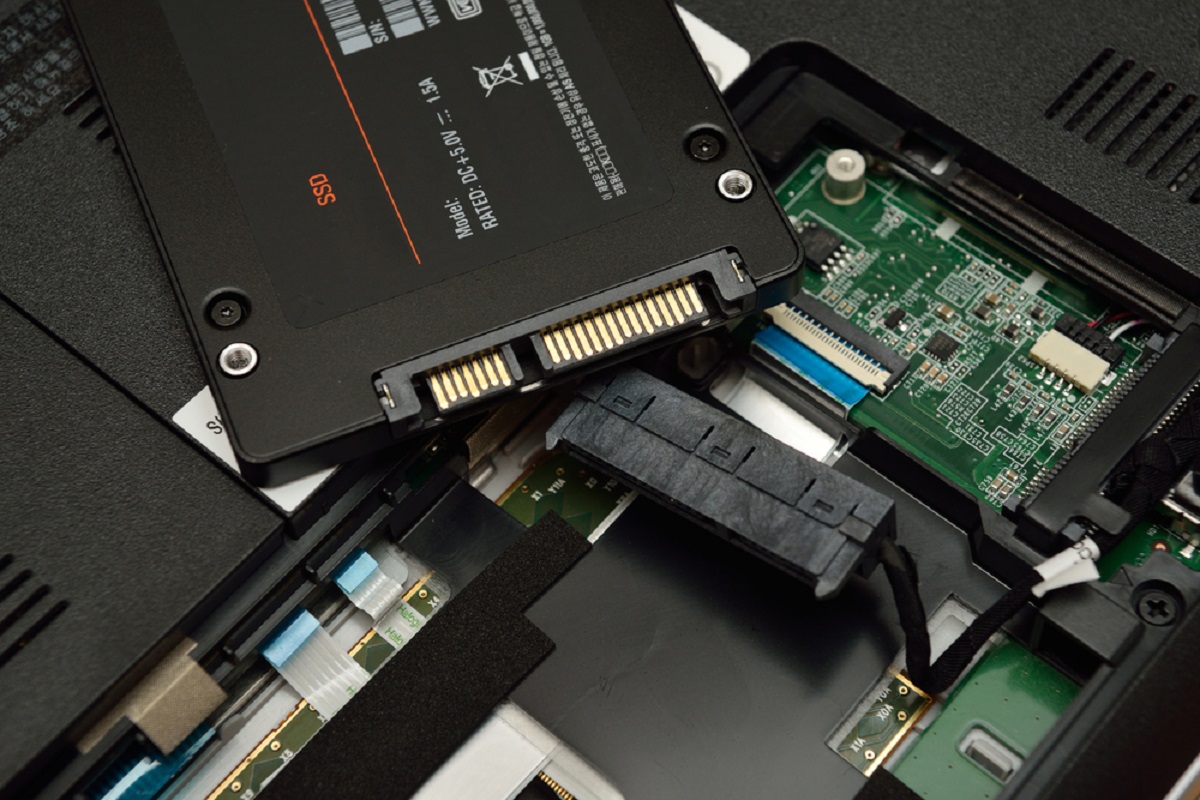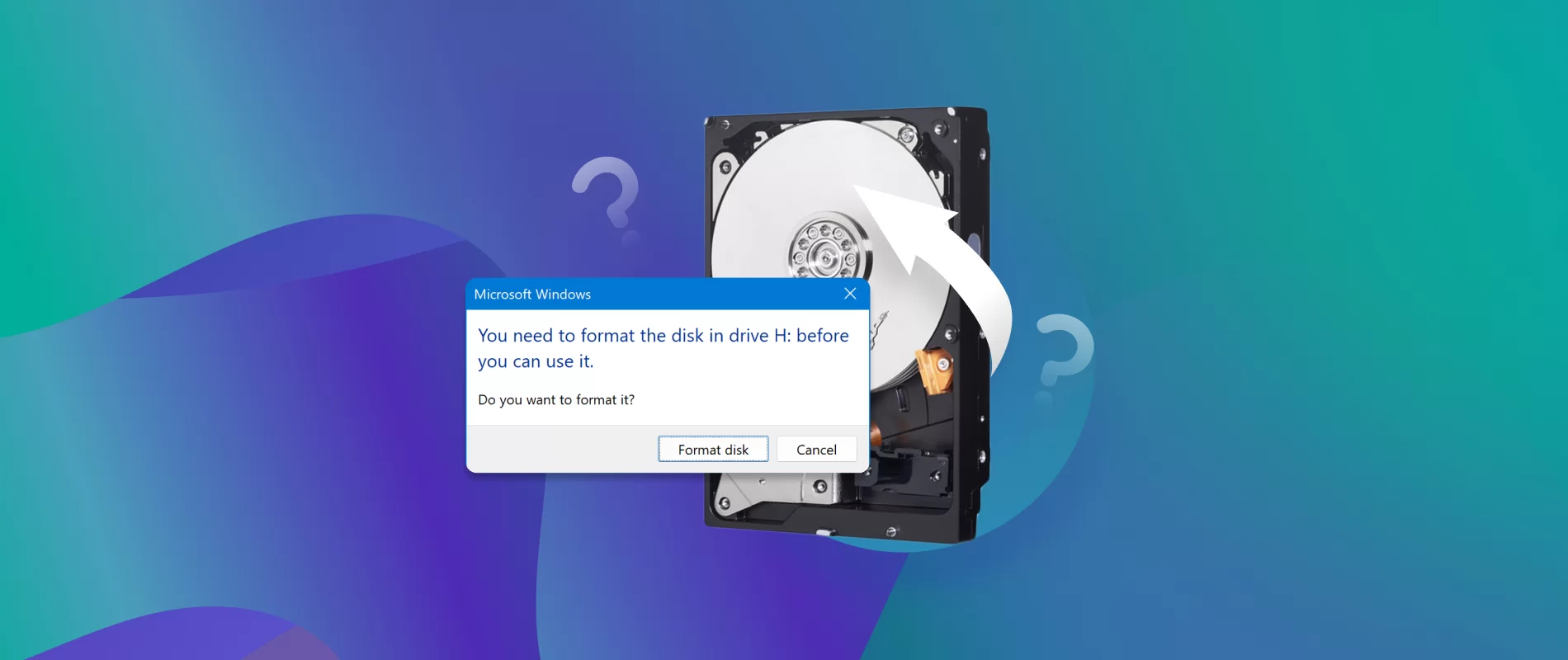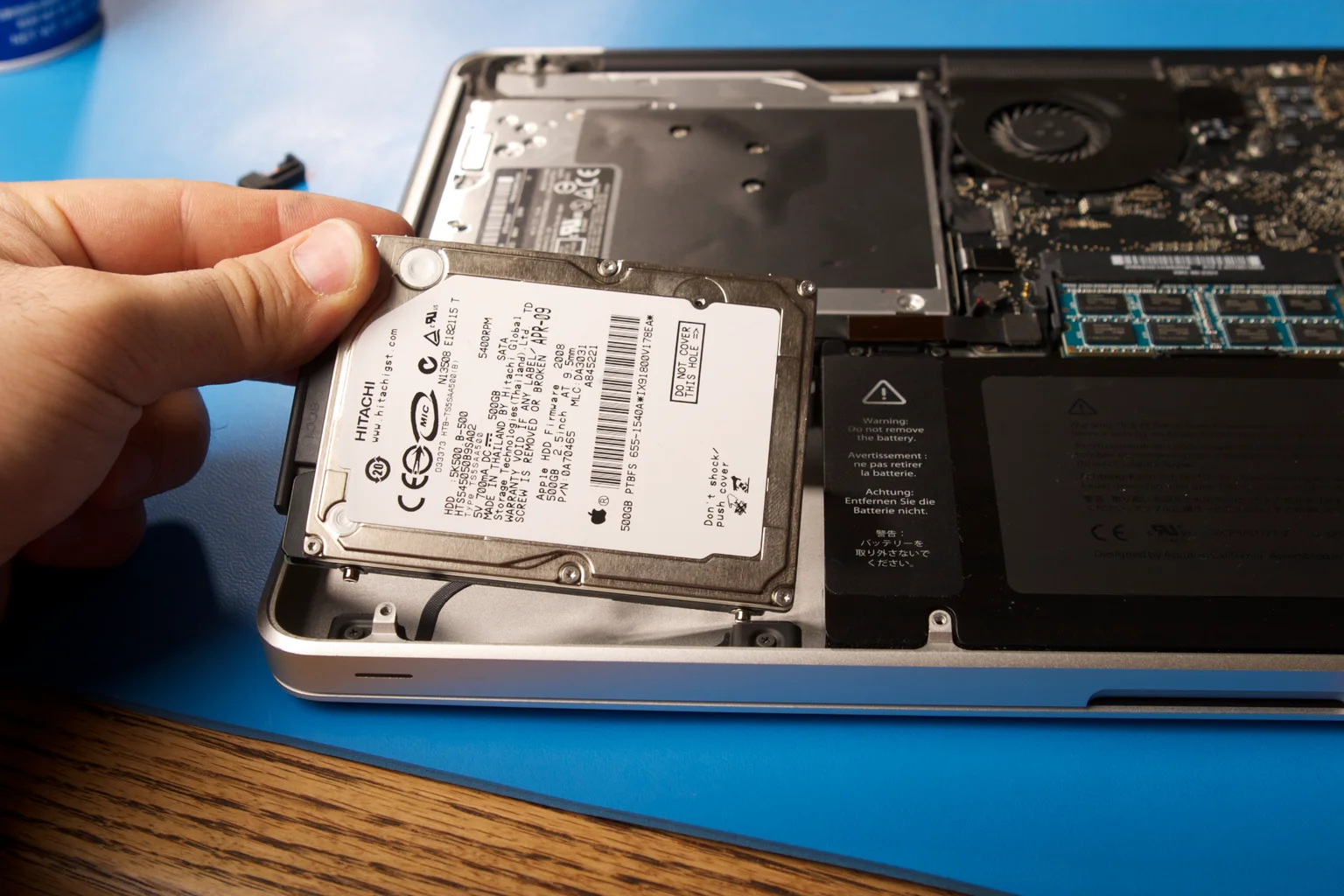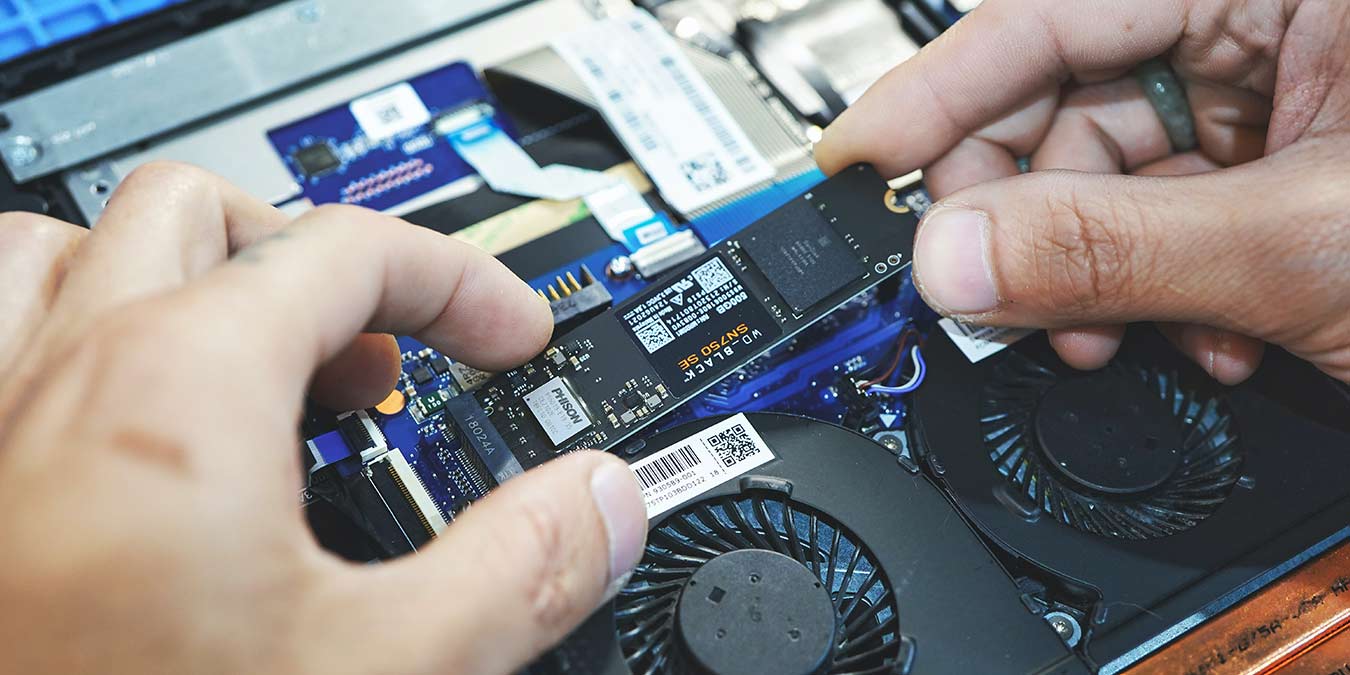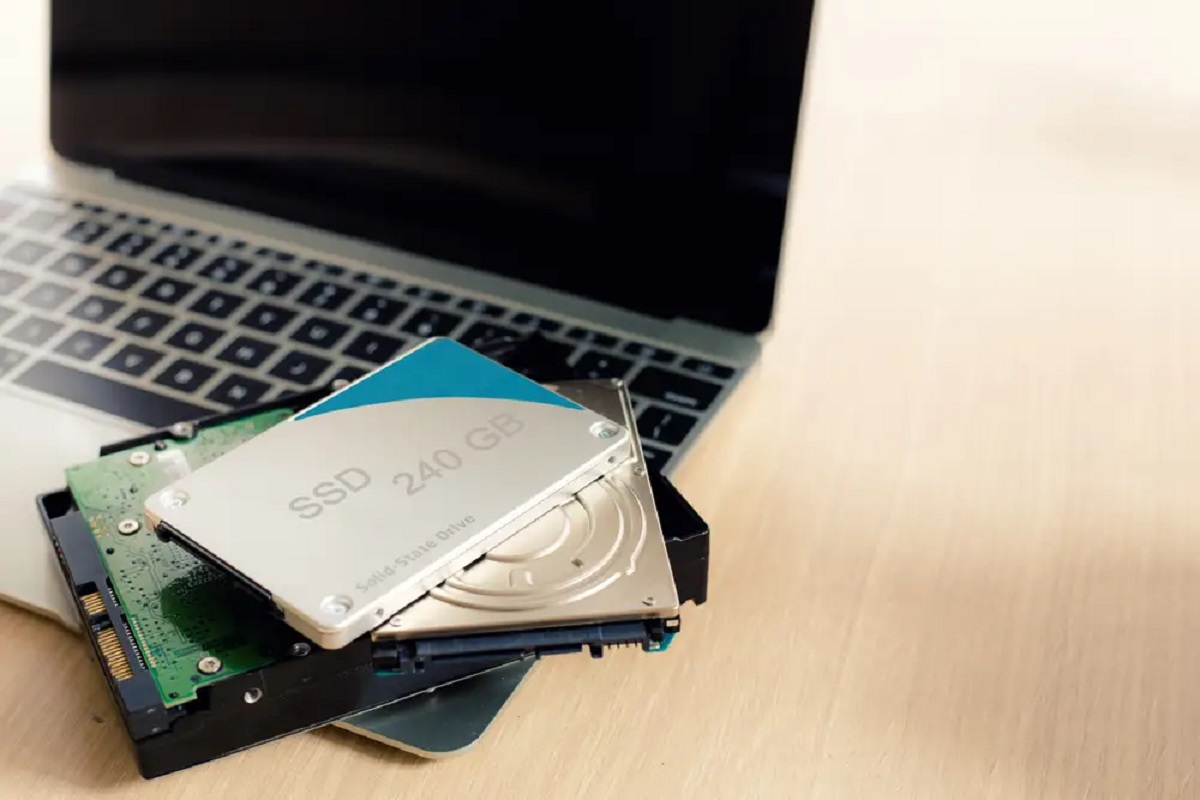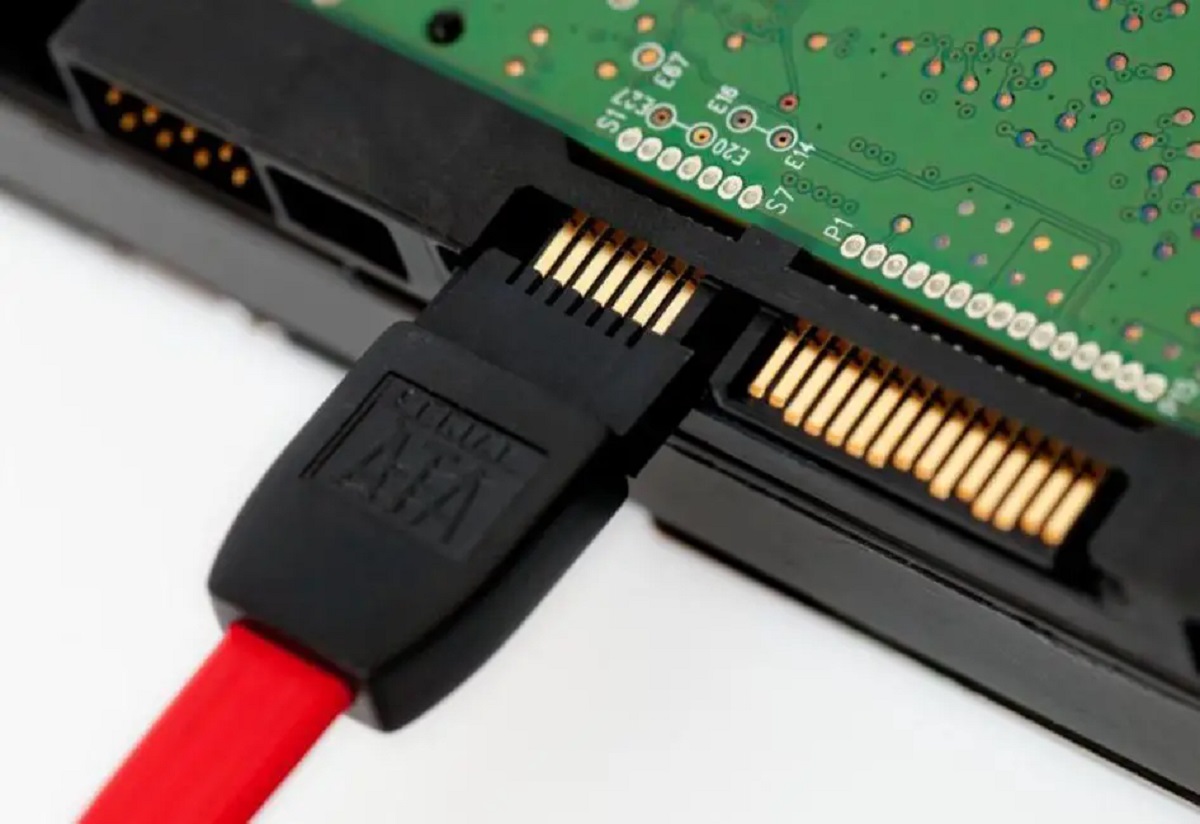Introduction
In today’s fast-paced digital age, having a solid state drive (SSD) can significantly improve the performance and speed of your computer. Unlike traditional hard disk drives (HDD), SSDs use flash memory to store data. This technology allows for faster data access, quicker boot times, and smoother multitasking capabilities.
But how do you know if your computer is equipped with an SSD? Finding out the type of storage device your computer has is crucial information, as it can help you understand how your system functions and make informed decisions regarding upgrades or troubleshooting.
In this article, we will guide you through the process of checking whether you have a solid state drive on your Windows, Mac, or Linux computer. We will also explore the use of third-party software that can assist in determining the type of storage device you have.
So, whether you are a tech enthusiast curious about the inner workings of your computer or someone looking to optimize their system’s performance, read on to discover the various methods for identifying if you have a solid state drive.
What is a Solid State Drive (SSD)?
A Solid State Drive (SSD) is a storage device that uses flash memory to store data. Unlike traditional hard disk drives (HDDs) that rely on spinning disks and mechanical parts, SSDs utilize integrated circuits to store and retrieve data quickly. This results in significantly faster performance and improved durability compared to HDDs.
The key component of an SSD is the NAND flash memory, which retains data even when there is no power supply. This means that SSDs can instantly access stored information without the need for the physical movement of read and write heads, as in HDDs. This eliminates the latency that is commonly associated with mechanical drives, resulting in faster boot times, file transfers, and application loading.
In addition to their speed, SSDs offer enhanced reliability due to their lack of moving parts. Without rotating disks, SSDs are more resistant to shock, vibration, and wear and tear. This makes them an excellent choice for laptops and portable devices where durability is crucial.
Another advantage of SSDs is their energy efficiency. Since SSDs don’t require power to spin disks or move read and write heads, they consume less energy compared to HDDs. This can lead to longer battery life in laptops and reduced energy consumption in desktop computers.
SSDs come in various form factors, including the 2.5-inch SATA SSD, M.2 SSD, and PCIe SSD. The choice of form factor depends on the device compatibility and speed requirements. While SATA SSDs are commonly used in traditional laptops and desktops, M.2 and PCIe SSDs offer higher speeds and are often used in gaming rigs and high-performance workstations.
Overall, the advent of SSDs has revolutionized the storage industry by offering faster performance, increased durability, and energy efficiency. As technology advances, SSD capacity continues to grow, providing users with ample space for their files, applications, and multimedia content.
Why should I check if I have a Solid State Drive?
Knowing whether your computer is equipped with a solid state drive (SSD) is important for several reasons. Here are a few key reasons why you should check if you have an SSD:
1. Performance: SSDs offer significantly faster read and write speeds compared to traditional hard disk drives (HDDs). By having an SSD, you can experience faster boot times, quicker application launches, and improved overall system responsiveness. Checking if you have an SSD can help you understand why your computer performs the way it does and whether hardware upgrades or optimizations are necessary.
2. Data Transfer: If you frequently transfer large files or work with resource-intensive applications, having an SSD can greatly reduce the time it takes to complete these tasks. SSDs excel in handling data-intensive operations, allowing for quicker data transfers and improved workflow efficiency. By confirming that you have an SSD, you’ll have a better understanding of your system’s capabilities in terms of data transfer rates.
3. Reliability: SSDs are more durable and reliable compared to HDDs due to their lack of moving parts. HDDs are susceptible to mechanical failures, such as disk platter damage or read/write head crashes, which can result in data loss. SSDs, on the other hand, are more resistant to physical shocks and vibrations, making them a more reliable choice for storing important data. Verifying if you have an SSD can give you peace of mind knowing that your data is stored on a more robust and reliable storage device.
4. Energy Efficiency: SSDs consume less power compared to HDDs, making them more energy-efficient. This is especially important for those using laptops or portable devices, as SSDs can help prolong battery life. By confirming if you have an SSD, you’ll be aware of the energy-saving benefits your system enjoys, allowing you to make better choices in terms of power management and energy conservation.
5. Upgrade Considerations: If you’re planning to upgrade or replace your storage device, knowing if you have an SSD is crucial. SSDs offer a noticeable performance boost over HDDs, and upgrading to an SSD can breathe new life into an older computer or greatly enhance the performance of a new one. By identifying if you have an SSD, you can determine the appropriate upgrade options and make an informed decision based on your specific needs and budget.
In summary, checking if you have a solid state drive is essential for understanding your computer’s performance, optimizing data transfers, ensuring data reliability, conserving energy, and making informed upgrade decisions. By knowing what type of storage device you have, you can take full advantage of the benefits offered by SSD technology and make the most of your computing experience.
Checking the Storage Device on Windows
To determine if your Windows computer has a solid state drive (SSD), you can use the built-in tools and settings. Here’s how to check:
1. Device Manager: Open the Device Manager by right-clicking on the Start menu button and selecting “Device Manager.” In the Device Manager window, expand the “Disk drives” category. If your storage device is listed as a type of SSD (e.g., “Solid State Drive” or “SSD”), then you have an SSD installed.
2. Task Manager: Open the Task Manager by pressing Ctrl + Shift + Esc or by right-clicking on the taskbar and selecting “Task Manager.” In the Task Manager window, go to the “Performance” tab and select “Storage” from the sidebar. Under the “Drive” section, look for the “Media Type” column. If it shows “SSD,” then your storage device is an SSD.
3. Windows Storage Settings: Open the Windows Settings by pressing Windows key + I or by clicking on the Start menu and selecting the gear icon. In the Settings window, go to the “System” category and select “Storage” from the sidebar. Under the “Local storage” section, you will see a breakdown of your storage devices. If it specifies that your “System drive” is an SSD, then you have an SSD installed.
4. Third-Party Software: Another option to identify your storage device type is by using third-party software. There are numerous free tools available, such as CrystalDiskInfo and Speccy, that can display detailed information about your hardware, including the type of storage device. Simply download and install the software, launch it, and navigate to the storage device section to find out if you have an SSD.
By following these steps, you can easily check if your Windows computer is equipped with a solid state drive. Knowing the type of storage device you have will help you understand your system’s performance capabilities and make informed decisions when it comes to optimizing your computer’s speed and storage capacity.
Checking the Storage Device on Mac
If you are using a Mac computer and want to determine if you have a solid state drive (SSD), you can utilize the built-in system settings and utilities. Here’s how you can check:
1. About This Mac: Click on the Apple menu in the top-left corner of your screen and select “About This Mac.” In the Overview tab, you will see an overview of your Mac’s hardware. Look for the “Storage” section, which will display the type of storage device. If it mentions “Solid State Drive” or “SSD,” then you have an SSD installed.
2. System Information: Open the “System Information” app on your Mac by pressing Command + Space to open Spotlight Search, typing “System Information,” and selecting the app from the search results. In the System Information window, click on “Storage” in the sidebar. Here, you will find detailed information about your storage devices. Look for the “Media Type” column, which will indicate if your storage device is an SSD.
3. Disk Utility: Open the “Disk Utility” app on your Mac by clicking on the Spotlight Search icon in the top-right corner of the screen (magnifying glass icon), typing “Disk Utility,” and selecting the app from the search results. In Disk Utility, you will see a list of all connected storage devices. Select your primary disk from the sidebar (usually named “Macintosh HD” or “SSD”) and check the information displayed in the bottom section. If it shows “Solid State” or “Flash Storage,” then you have an SSD.
4. Terminal Command: If you prefer using Terminal, you can open it by going to Finder, selecting “Applications” from the sidebar, opening the “Utilities” folder, and selecting “Terminal.” Once Terminal is open, type the command “system_profiler SPSerialATADataType | grep ‘Medium Type'” and press Enter. The output will display the medium type of your storage device. If it shows “Solid State” or “SSD,” then you have an SSD.
These methods will help you check if your Mac computer has a solid state drive. Knowing the type of storage device you have can give you insights into your system’s performance capabilities and aid you in making informed decisions about potential upgrades or optimizations.
Checking the Storage Device on Linux
If you are using a Linux-based operating system, there are several ways to check if your computer is equipped with a solid state drive (SSD). Here are a few methods you can use:
1. Using the command line: Open the terminal on your Linux system. Type the command “lsblk -d -o name,rota” and press Enter. This command will list all the storage devices connected to your system and their rotation status. If the value under the “rota” column is “0,” then it means the device is an SSD. Conversely, if the value is “1,” it indicates a traditional hard disk drive (HDD).
2. Using the Disks utility: Many Linux distributions come with a graphical utility called “Disks” (also known as “gnome-disks” or “gnome-disk-utility”). Launch this utility, and it will display a list of your storage devices. Look for entries that mention “SSD” or “Solid State Drive” to identify if you have an SSD in your system.
3. Using the System Monitor: Open the System Monitor on your Linux system. This utility can typically be found in the Applications menu under “System” or “Utilities.” Once open, navigate to the “File Systems” tab or a similar section that provides detailed information about your storage devices. Look for entries that mention “SSD” or “Solid State Drive” to determine if you have an SSD.
4. Using the smartctl command: Install the “smartmontools” package if it’s not already installed on your Linux system. Open the terminal and type the command “sudo smartctl -a /dev/sda” (replace “/dev/sda” with the appropriate device name for your system). Look for lines that mention “Solid State Device” or similar keywords to determine if your device is an SSD.
These methods should help you check if your Linux computer is equipped with a solid state drive. Knowing the type of storage device you have can provide valuable insights into your system’s performance capabilities, allowing you to make informed decisions regarding optimizations or upgrades.
Using Third-Party Software to Determine the Storage Device Type
If you want a more detailed analysis of your computer’s storage device type or are unable to determine it using built-in settings and utilities, you can rely on third-party software. Here are a few popular options that can help you determine the storage device type:
1. CrystalDiskInfo: CrystalDiskInfo is a free and lightweight utility that provides detailed information about your storage devices. It displays crucial data such as drive model, interface type, health status, and medium type (e.g., HDD or SSD). Simply download and install CrystalDiskInfo, launch the program, and it will provide you with an overview of your storage devices.
2. Speccy: Speccy is a comprehensive system information tool that can be used to identify the storage device type. It provides details about various hardware components, including the storage drives. After installing Speccy, launch the program, and navigate to the Storage section to find information about your storage devices, including whether they are SSDs or HDDs.
3. HWiNFO: HWiNFO is a powerful system information and diagnostic tool that can provide in-depth information about your hardware. After downloading and installing HWiNFO, open the program and navigate to the “Storage” section. Here, you will find detailed information about each storage device, including the drive type (SSD or HDD).
4. Belarc Advisor: Belarc Advisor is a comprehensive system analysis tool that generates a detailed report of your computer’s hardware and software. It includes information about your storage devices, including the drive type. Install Belarc Advisor, run the program, and check the generated report to identify if you have an SSD or an HDD.
These third-party software options can provide more detailed information about your computer’s storage devices, including whether they are solid state drives (SSDs) or traditional hard disk drives (HDDs). They offer a convenient way to analyze your system and make informed decisions regarding upgrades, optimizations, or troubleshooting related to storage devices.
Conclusion
Determining whether your computer has a solid state drive (SSD) is important for understanding its performance capabilities, optimizing data transfers, ensuring reliability, conserving energy, and making informed upgrade decisions. By using the built-in settings and utilities on your operating system or relying on third-party software, you can easily check if you have an SSD.
On Windows, the Device Manager, Task Manager, Windows Storage Settings, and third-party software can help you identify the type of storage drive you have. On Mac, you can use the “About This Mac” overview, System Information, Disk Utility, or Terminal commands to determine if you have an SSD. On Linux, command line tools like “lsblk” or graphical utilities such as Disks or System Monitor can provide the necessary information.
Third-party software like CrystalDiskInfo, Speccy, HWiNFO, and Belarc Advisor can offer more detailed analysis of your storage devices, including the drive type and health status. These tools can be particularly useful if you want in-depth information or are unable to determine the drive type using the built-in options.
Knowing whether your computer has an SSD is essential for taking advantage of its speed, reliability, and energy efficiency. An SSD can significantly improve overall system performance, reduce data transfer times, increase durability, and optimize power consumption. By understanding your storage device type, you can make informed decisions about upgrades, troubleshoot performance issues, and ensure your computer is running at its best.
In conclusion, checking for a solid state drive on your computer allows you to unlock the full potential of your system, enhance your computing experience, and make informed decisions for storage-related optimizations or upgrades.







